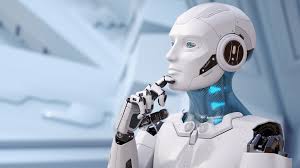Humanoid robots—machines designed to resemble the human body and mimic human actions—are no longer just science fiction. These intelligent entities are rapidly finding their place in real-world applications, from customer service and healthcare to education and research.
Equipped with artificial intelligence (AI), natural language processing (NLP), computer vision, and advanced mechanics, humanoid robots are ushering in a new era where humans and machines collaborate more naturally than ever before.
What Are Humanoid Robots?
A humanoid robot is a type of robot that mimics the appearance and movement of the human body. Most humanoids have a torso, arms, legs, and a head. Some even feature facial expressions, speech capabilities, and touch-sensitive skin.
They can walk, talk, recognize faces, process speech, respond emotionally, and perform complex tasks—making them ideal for environments that require social interaction or tasks designed for human ergonomics.
Key Technologies Behind Humanoid Robots
- Artificial Intelligence (AI): Enables decision-making, speech recognition, and emotional intelligence.
- Natural Language Processing (NLP): Allows understanding and generation of human speech.
- Sensors & Actuators: Help mimic human movement, posture, and gestures.
- Computer Vision: Enables facial recognition, object detection, and environment mapping.
- Machine Learning: Helps robots adapt to new tasks and user behaviors over time.
Popular Humanoid Robots Worldwide
| Robot Name | Developer | Key Function |
|---|---|---|
| Sophia | Hanson Robotics | Conversational AI and media representation |
| Atlas | Boston Dynamics | Agile mobility and complex movement tasks |
| Ameca | Engineered Arts | Human-like facial expression and social interaction |
| NAO | SoftBank Robotics | Education and research |
| Grace | Hanson Robotics | Elderly care and healthcare assistance |
Applications of Humanoid Robots
1. Customer Service
Humanoid robots like Pepper and Furhat are being deployed at airports, banks, and malls to:
- Greet and assist customers
- Provide directions and answer FAQs
- Promote products or services
2. Healthcare
Humanoids help in elderly care, rehabilitation, and companionship:
- Reminding patients about medication
- Monitoring vital signs
- Offering emotional support and reducing loneliness
3. Education
Robots like NAO and Robothespian are used in:
- STEM education
- Teaching programming and robotics
- Assisting children with autism or learning disabilities
4. Research and Development
Universities use humanoid robots to:
- Study human-robot interaction
- Develop advanced machine learning models
- Simulate social environments
5. Entertainment
Humanoid robots perform in theaters, museums, and theme parks:
- Acting and storytelling
- Audience interaction
- Robot-guided tours
Advantages of Humanoid Robots
Human-Friendly Design: Suitable for human environments without major infrastructure changes.
Social Engagement: Ideal for roles requiring empathy and communication.
Adaptability: Can perform a variety of tasks without reprogramming for each.
Learning Capabilities: Continually improve through AI and user feedback.
Challenges and Limitations
- High Costs: Advanced humanoid robots can cost hundreds of thousands of dollars.
- Battery Life: Power consumption is still a constraint for long deployments.
- Mobility & Balance: Bipedal walking is complex and energy-intensive.
- Privacy & Ethics: Always-on cameras and sensors can raise data concerns.
- Emotional Confusion: Over-humanized robots may blur ethical lines, especially in care settings.
Humanoid Robots vs Industrial Robots
| Feature | Humanoid Robots | Industrial Robots |
|---|---|---|
| Purpose | Social interaction, assistance | Repetitive, high-speed tasks |
| Environment | Offices, hospitals, homes | Factories, warehouses |
| Intelligence | High (AI, NLP, emotion) | Low to medium (pre-programmed) |
| Flexibility | Multi-tasking, adaptive | Task-specific |
Future Trends in Humanoid Robotics
AI Integration
More intelligent conversations, emotion recognition, and autonomous decision-making.
Global Adoption
Countries like Japan, South Korea, and UAE are heavily investing in humanoid service robots.
Human-Robot Collaboration (HRC)
Robots working with humans in hospitals, education, and public service roles.
Biomimicry
Development of synthetic muscles, skin, and sensors to replicate human touch and motion more accurately.
Case Study: Sophia the Robot
Sophia, created by Hanson Robotics, is the most famous humanoid robot.
- First robot to be granted citizenship (Saudi Arabia)
- Capable of facial expressions, speech, and media interviews
- Used for research, education, and media appearances
Sophia’s development showcases the potential and public interest in human-like machines.
Conclusion
Humanoid robots are not just mechanical marvels—they’re evolving into companions, assistants, and co-workers. As AI continues to advance, the gap between humans and robots narrows, creating opportunities in healthcare, education, service, and research.
But with great power comes great responsibility. Developers and regulators must ensure ethical use, data privacy, and social balance as these machines become more lifelike.
One thing is clear: the era of human-centric robotics has arrived—and humanoid robots are leading the way.


